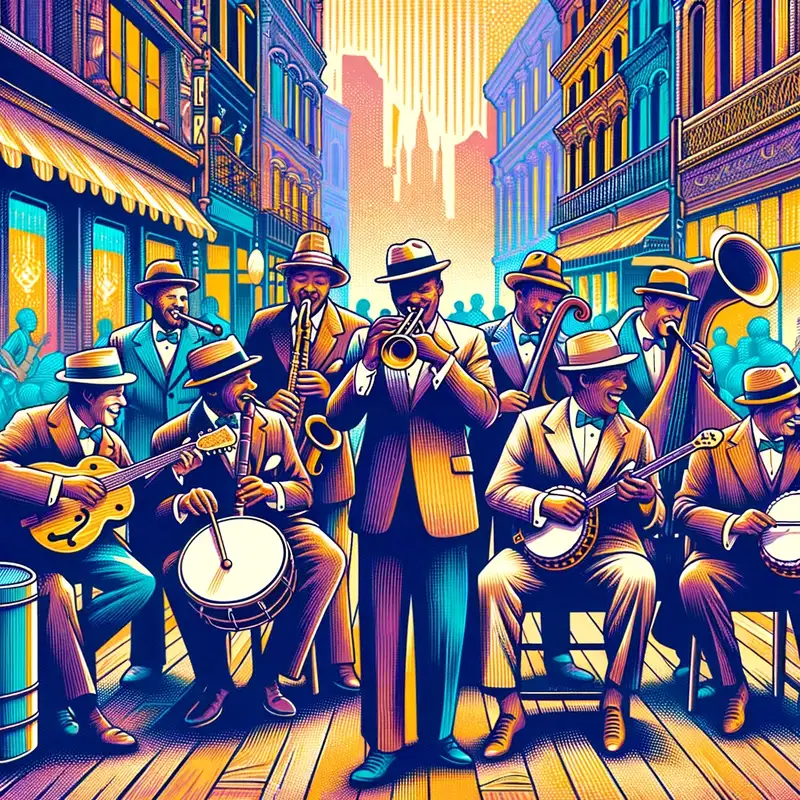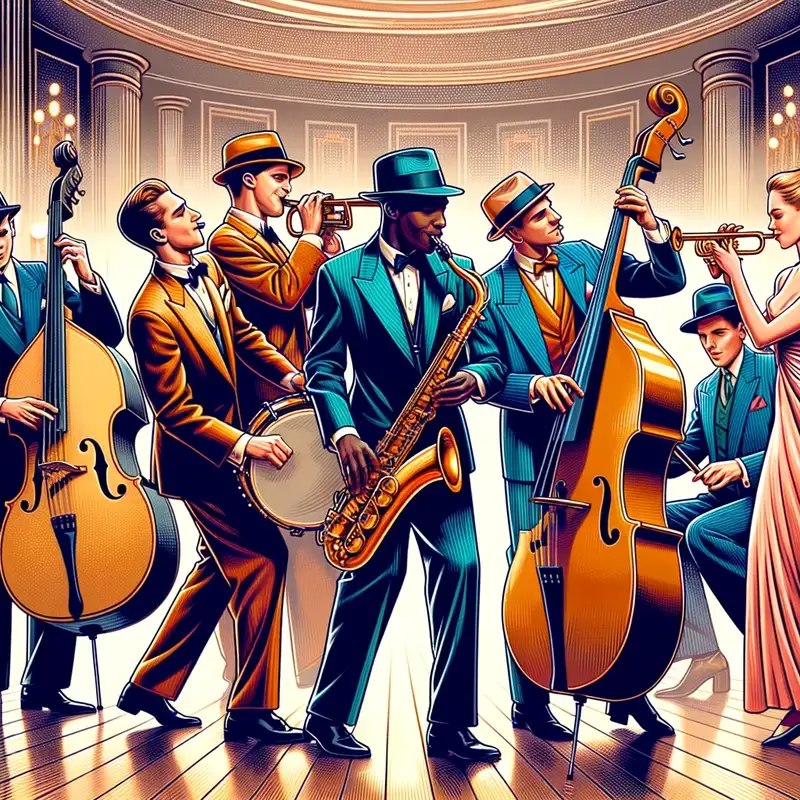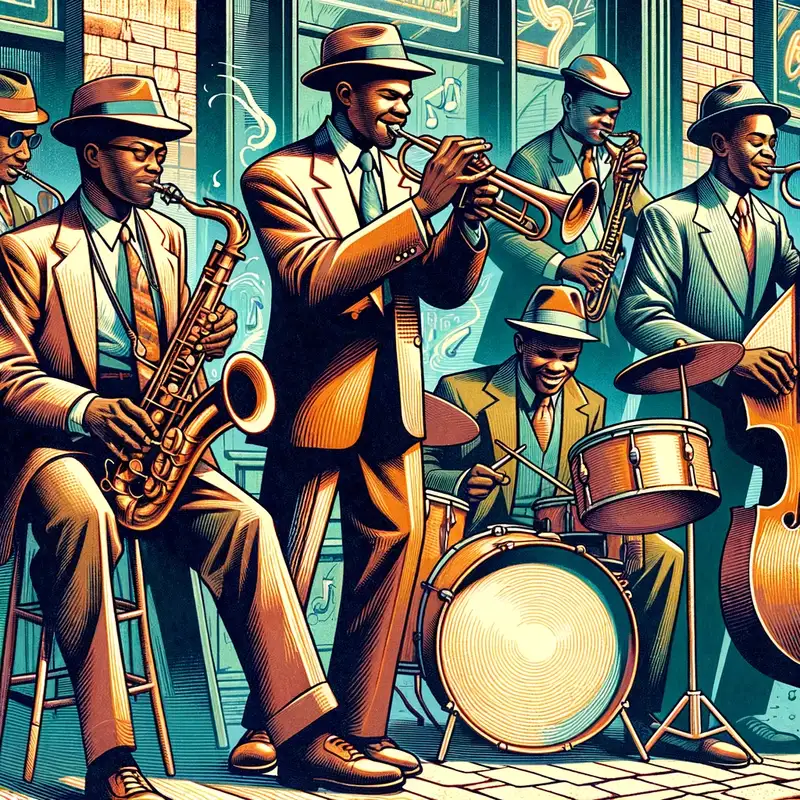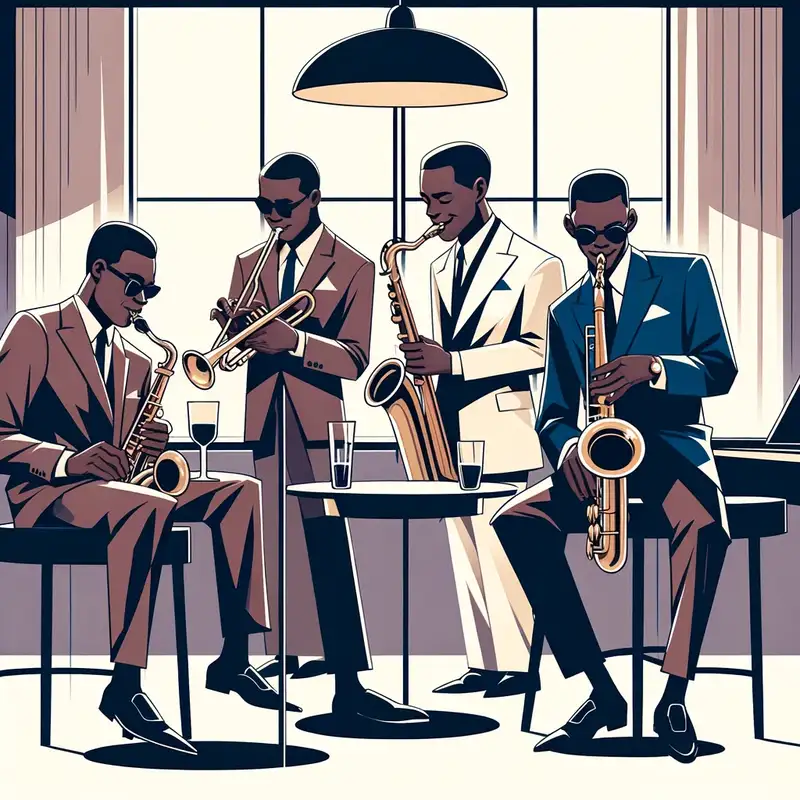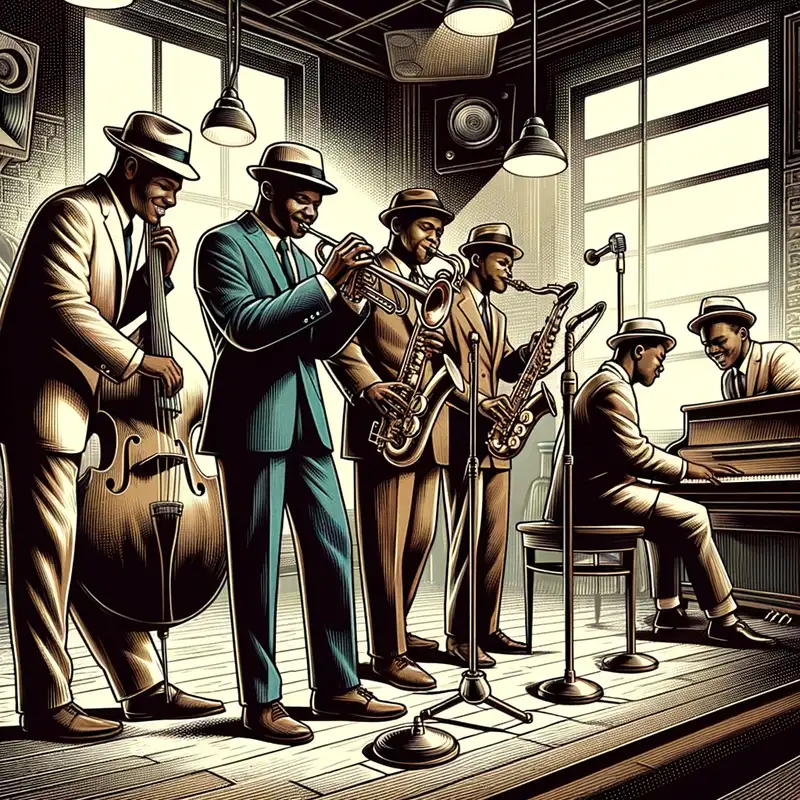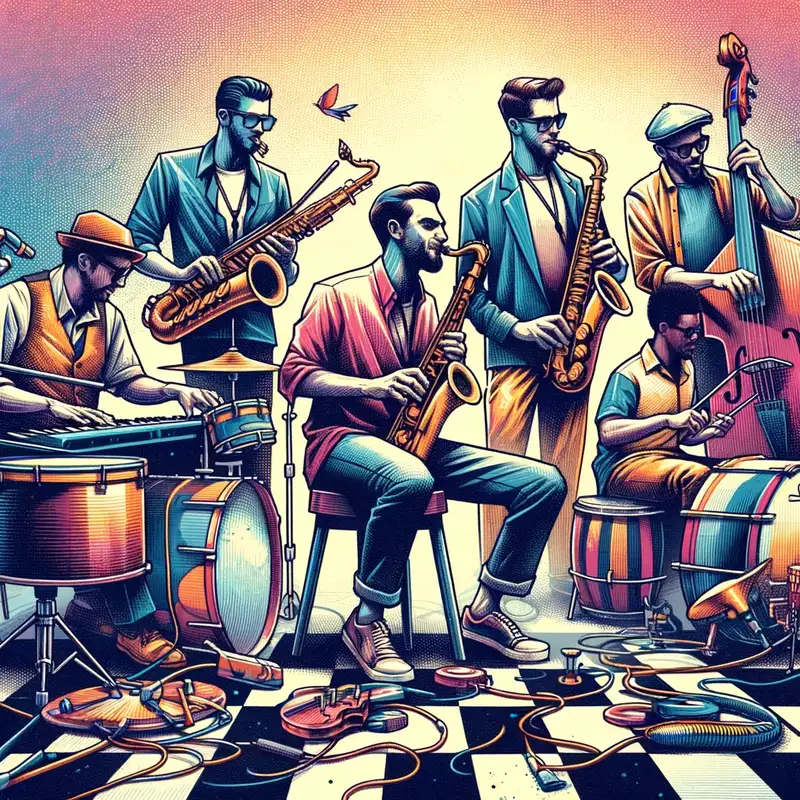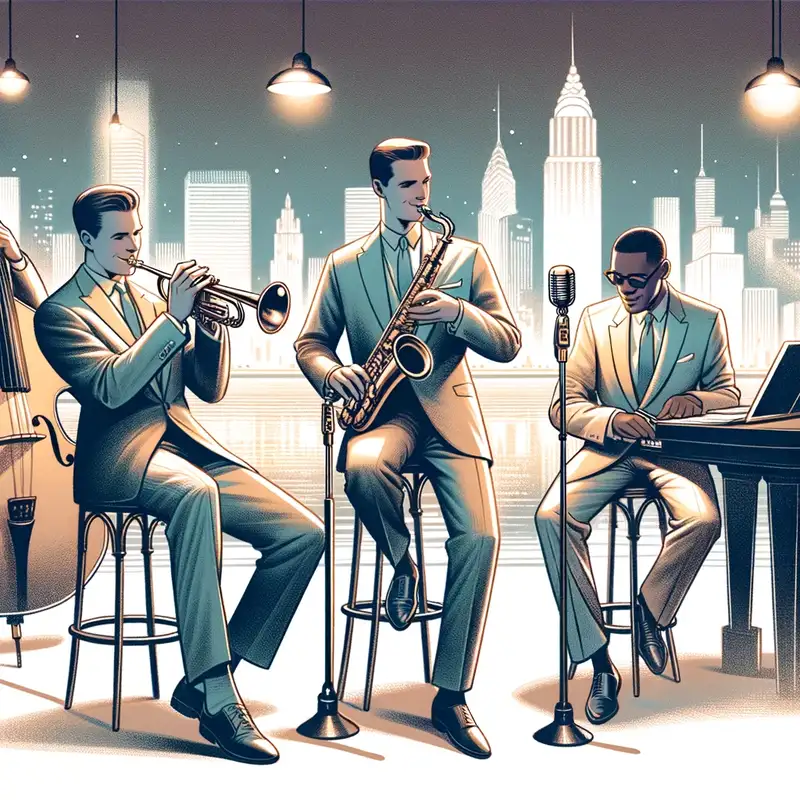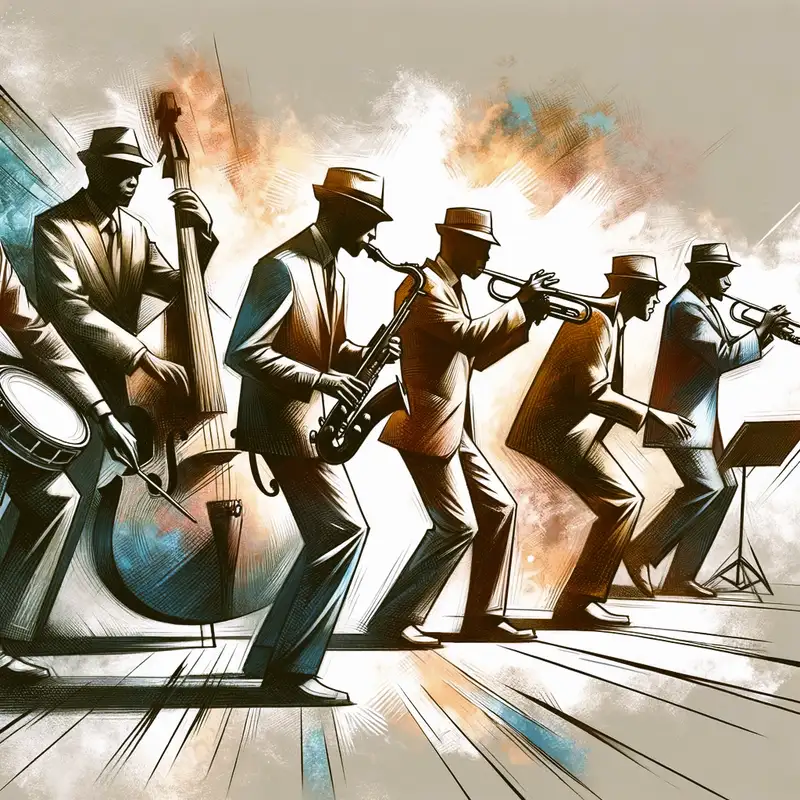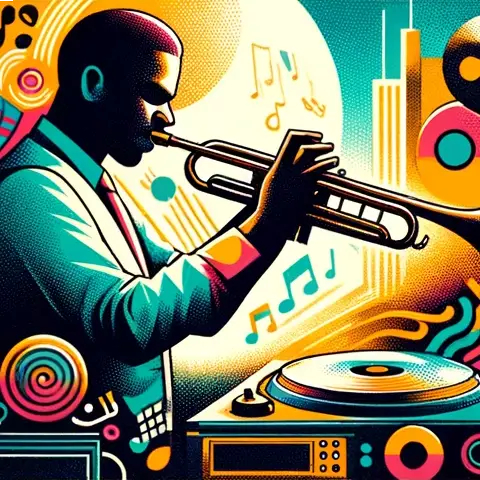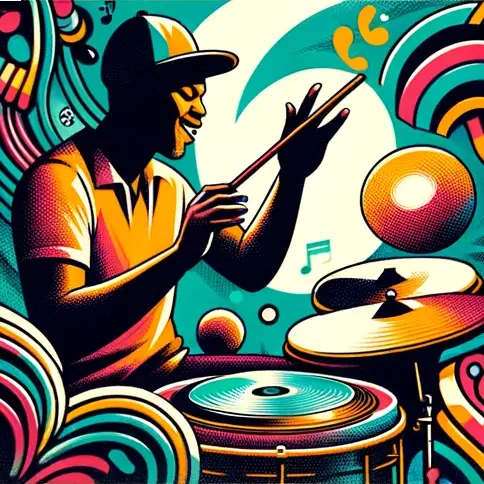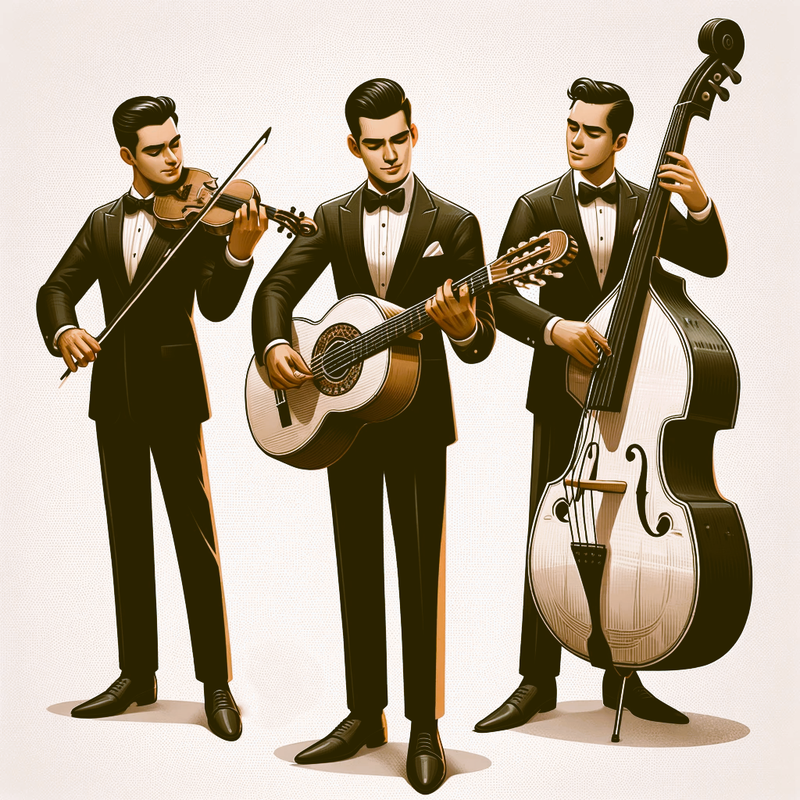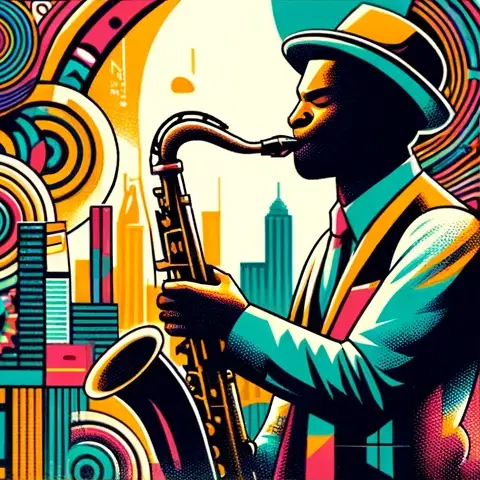Jazz
Jazz, often referred to as “America’s classical music,” is a genre that emerged in the early 20th century, primarily within African-American communities. It’s celebrated for its intricate rhythms, improvisational nature, and unique expressiveness.
Table of Contents
Prominent Styles and Movements
- Dixieland: Early style from the 1910s, originating in New Orleans, with collective improvisation.
- Swing & Big Band: Popular in the 1930s and 1940s, characterized by a strong rhythm section and horn arrangements.
- Bebop: Developed in the 1940s, it features fast tempos, virtuosic playing, and complex chord progressions.
- Cool Jazz: A smoother, more relaxed style from the 1950s, contrasted with the intensity of bebop.
- Hard Bop: A blend of R&B, gospel, and blues, emerged in the 1950s.
- Modal Jazz: Focusing on scales or “modes” rather than chord progressions.
- Free Jazz: Emerged in the 1960s, it’s characterized by the absence of set chord patterns or tempos.
- Jazz Fusion: A blend of jazz improvisation with rock rhythms, developed in the 1970s.
- Smooth Jazz: A contemporary style, blending jazz elements with pop and R&B.
Origins and Development
The roots of jazz are deep, complex, and intertwined with the cultural and social life of America, especially the experiences of the African American community.
African Roots and European Influences
- African Musical Traditions: The rhythmic complexity, the use of blue notes (notes sung or played at a slightly lower pitch than the standard), and the call-and-response pattern in jazz can be traced back to African music. Slaves brought with them a rich musical tradition, which over time melded with European styles.
- European Musical Forms: European band instruments and harmonic structures were integrated into the African, leading to a unique blending of traditions.
New Orleans: The Birthplace of Jazz
The port city of New Orleans, with its mix of French, Spanish, African, and Creole cultures, was a melting pot of musical expressions. Here, the groundwork for jazz was laid.
- Brass Bands: The city was home to numerous brass bands that played a mix of marches, waltzes, and popular tunes of the day.
- Creole Influence: The Creole people, often classically trained musicians, brought European instrumentation and formal musical knowledge, which they combined with the rhythmic and melodic patterns of their African heritage.
- Blues and Ragtime: These two forms, emerging in the late 19th and early 20th centuries, became foundational to jazz. Blues, with its emotional depth, and ragtime, with its syncopated rhythms, provided early jazz musicians with opportunities for improvisation.
Migration and the Spread of Jazz
As African-Americans migrated northward, particularly to cities like Chicago, in the early 20th century, they carried jazz with them.
- Chicago and the Jazz Age: With the proliferation of speakeasies during the Prohibition era, jazz found its stage. It became the soundtrack of the Roaring Twenties, marking a distinct break from the past and symbolizing the vibrancy and defiance of the era.
- Recording Industry: The advent of recording technology in the early 20th century played a pivotal role in spreading jazz to wider audiences. The first jazz recording, made by the Original Dixieland Jass Band in 1917, became a commercial hit.
Jazz in the Harlem Renaissance
The 1920s and 1930s saw a blossoming of African-American arts and culture, known as the Harlem Renaissance. Jazz was central to this movement, with artists like Duke Ellington leading the way.
Diverse Offshoots
As jazz continued to evolve, various sub-genres emerged, including Dixieland, swing, bebop, and cool jazz, each reflecting different musical preferences, societal changes, and regional influences.
Key Characteristics
- Improvisation: Perhaps the most defining feature of jazz, musicians often create their melodies on the spot.
- Syncopation: Emphasizing off-beats gives jazz its distinctive rhythm.
- Swing: A unique rhythmic momentum where certain notes are prolonged, and others are rushed.
- Complex Harmonies: Jazz often utilizes blues scales, modal playing, and extended chords.
Legendary Figures
- Louis Armstrong: A foundational figure, his trumpet playing and unique voice significantly shaped early jazz.
- Duke Ellington: Bandleader and composer who expanded the realm of jazz to symphonic forms.
- Charlie Parker: A pioneering figure in the development of bebop.
- Miles Davis: Known for his innovative approaches, Davis played a key role in several jazz movements, including cool jazz, hard bop, modal jazz, and fusion.
- John Coltrane: A virtuosic saxophonist, he was influential in modal and free jazz.
- Ella Fitzgerald: Known as the “First Lady of Song,” she’s celebrated for her pure tone and improvisational scat singing.
Cultural Impact
Jazz played a significant role in breaking down racial barriers in the US. The collaborative nature of jazz bands and the venues in which they played, like New York’s Cotton Club, often brought together people from various backgrounds.
The jazz age (1920s) also influenced dance styles, fashion, and literature. Later, in the 1960s, jazz became intertwined with the civil rights movement, with many songs echoing themes of freedom and equality.
